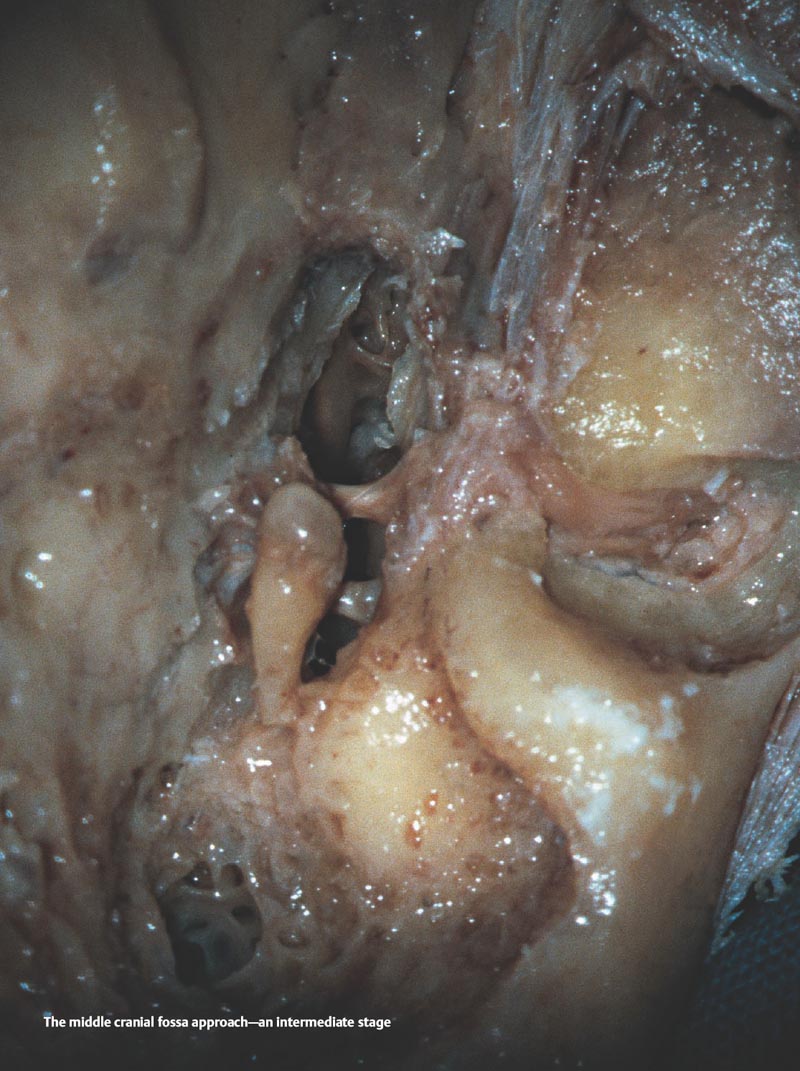19 Middle Cranial Fossa Approach Following an approximately 4×4cm craniotomy and retraction of the dura of the temporal lobe, exposure of the superior surface of the petrous bone and performance of procedures on the petrous bone or brainstem. A middle cranial fossa procedure is undertaken for facial paralysis due to a longitudinal fracture, or for Bell palsy; it is also carried out in different neurotologic procedures such as acoustic neuroma surgery. The critical anatomical structures in the middle cranial fossa approach are indicated in the diagrams. The relationship of these critical structures to one another is highlighted. The diagrams show the superior view, as in the approach through the middle cranial fossa, of the anatomical structures in the left surgical site. BC: Basal turn of cochlea CP: Cochleariform process GSPN: Greater superficial petrosal nerve I: Incus IAC: Internal auditory canal LFN: Labyrinthine facial nerve M: Malleus SSC: Superior semicircular canal SVN: Superior vestibular nerve TFN: Tympanic facial nerve V: Vestibule VFT: Vestibulofacial triangle Definitions and Tips Following dissection of the soft tissues, the temporal bone is ready for the procedure. In the first stage, the cortical bone at the zygomatic root is drilled with a large burr. During the operation, the craniotomy and temporal lobe retraction must be done beforehand. II: 7mm cutting burr MIL: Zygomatic root EAC: External auditory canal SSP: Superior surface of petrous bone ZR: Zygomatic root The anterior part of the cortical bone at the zygomatic root has been removed. The important anatomical areas and structures located on the superior surface of the petrous bone are indicated in the figure. AE: Arcuate eminence HF: Hiatus facialis MP: Meatal plane TG: Trigeminal ganglion TT: Tegmen tympani Working with the same burr, the posterior part of the cortical bone at the zygomatic root is extirpated. In this way, the cortical bone of the squamosa is brought to the same level as the superior surface level of the petrous bone, allowing better exposure of the deep structures, and in the operation, less retraction of the temporal lobe. Definitions and Tips There are very few recognizable surgical landmarks in middle cranial fossa approach because the anatomical structures are hidden within the bone. For this reason, each additional landmark is important. The microsurgical instrument in the figure is pointing to one of these landmarks, the arcuate eminence. The tegmen tympani, which is located lateral and posterior to the hiatus facialis, is another key landmark to be noted in this procedure. The microsurgical instrument in the figure is pointing to this landmark. Definitions and Tips The blue-line technique will be carried out on this temporal bone. Using first a medium-sized cutting burr and then a diamond burr, the arcuate eminence is drilled beginning posteriorly and going anteriorly, and the blue line of the superior semicircular canal is identified. II: 3–4mm cutting and diamond burrs MIL: Arcuate eminence MMA: Middle meningeal artery TG: Trigeminal ganglion TN: Trigeminal nerve
Definition
Indications
Anatomical Orientation

Surgical Anatomical Orientation
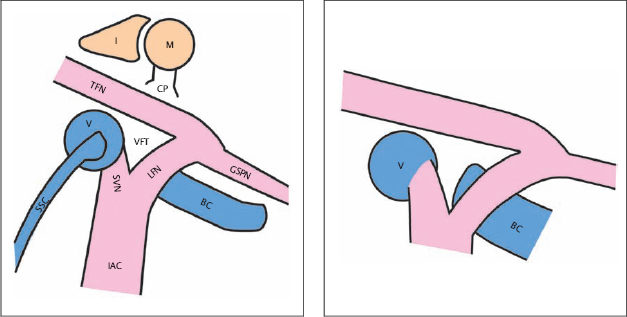
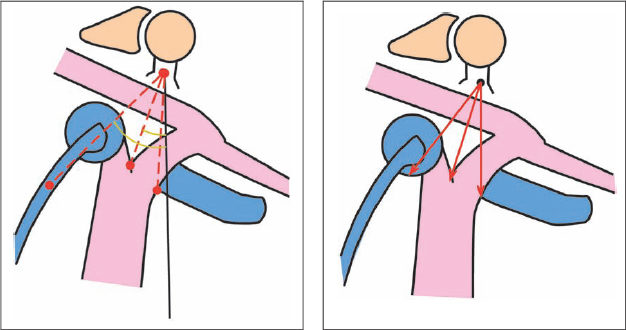
Surgical Steps
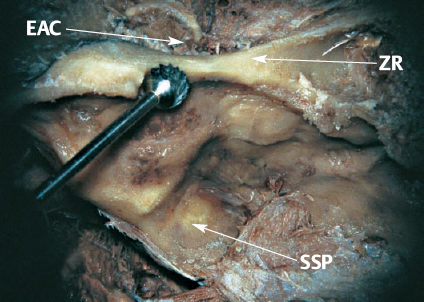
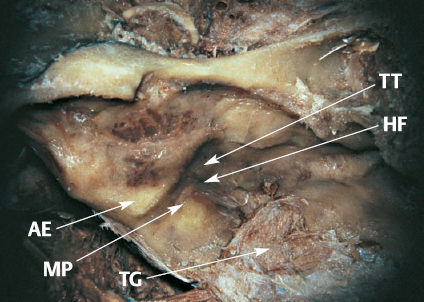
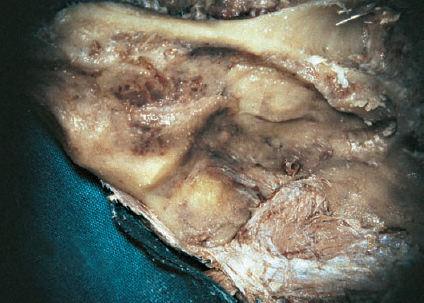
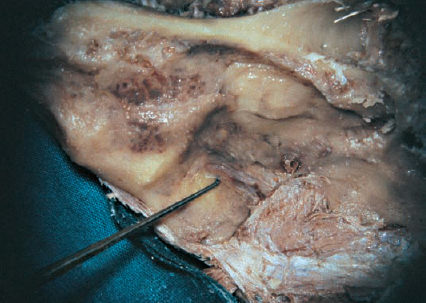
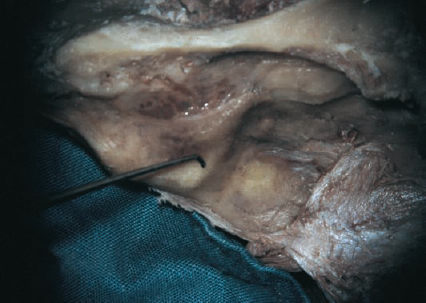
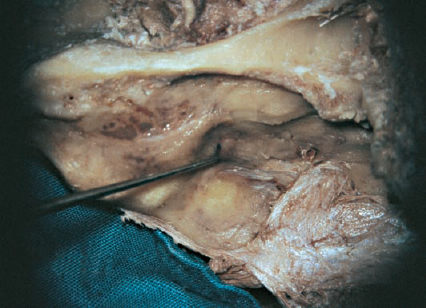


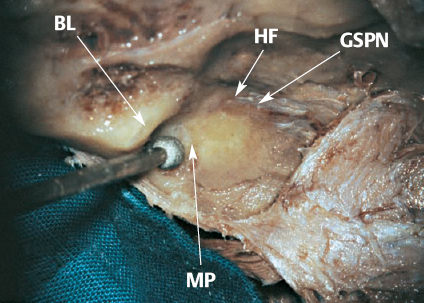
![]()
Stay updated, free articles. Join our Telegram channel

Full access? Get Clinical Tree


